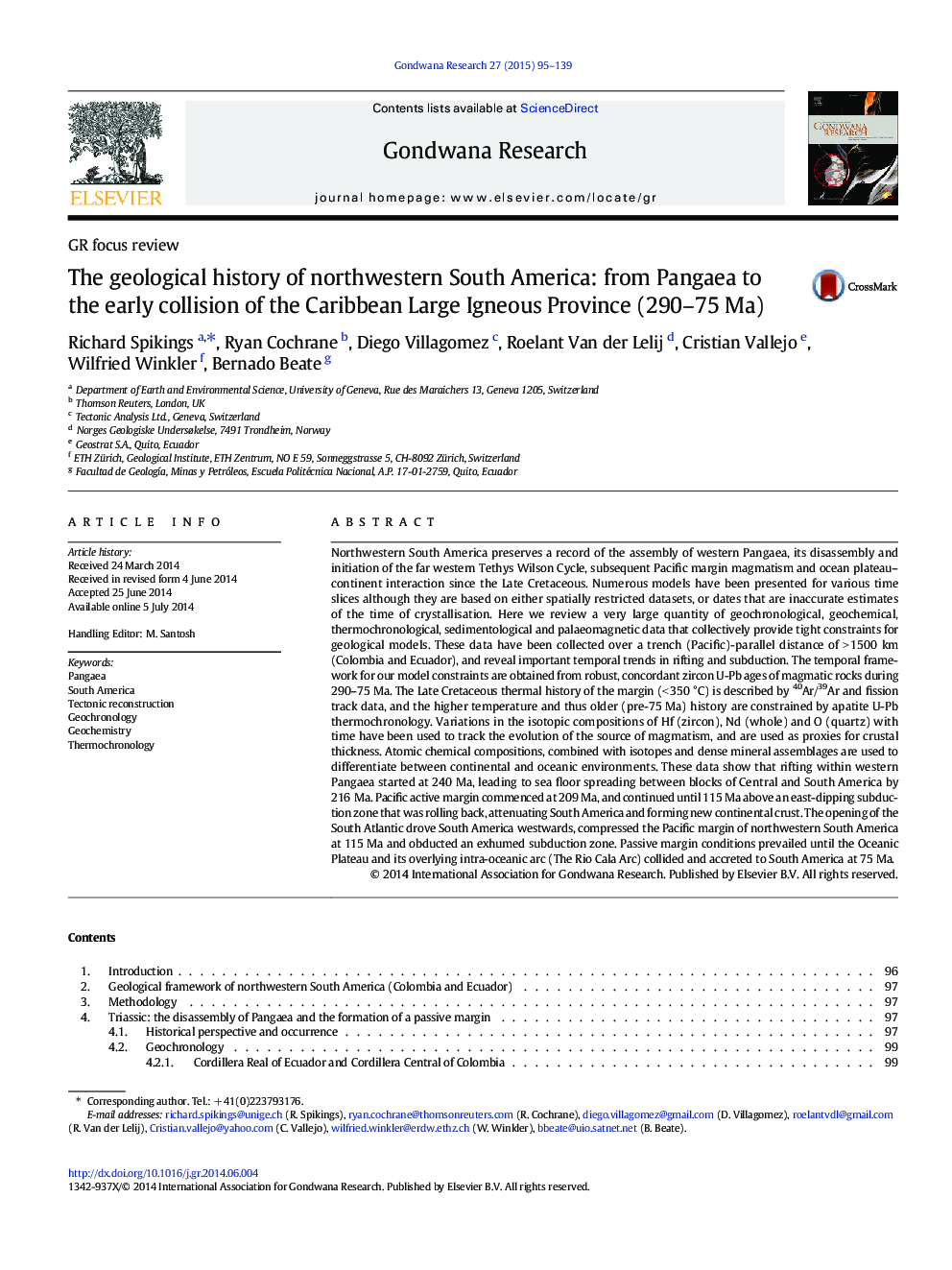| کد مقاله | کد نشریه | سال انتشار | مقاله انگلیسی | نسخه تمام متن |
|---|---|---|---|---|
| 4727179 | 1356364 | 2015 | 45 صفحه PDF | دانلود رایگان |

• Rift-to-drift transition occurred during 225–216 Ma; oceanic crust existed by 216 Ma.
• Arc magmatism and extension during 209–155 Ma along the Pacific margin.
• Oceanic plateau and overlying intra-oceanic arc collided with S. America at 75 Ma.
Northwestern South America preserves a record of the assembly of western Pangaea, its disassembly and initiation of the far western Tethys Wilson Cycle, subsequent Pacific margin magmatism and ocean plateau–continent interaction since the Late Cretaceous. Numerous models have been presented for various time slices although they are based on either spatially restricted datasets, or dates that are inaccurate estimates of the time of crystallisation. Here we review a very large quantity of geochronological, geochemical, thermochronological, sedimentological and palaeomagnetic data that collectively provide tight constraints for geological models. These data have been collected over a trench (Pacific)-parallel distance of > 1500 km (Colombia and Ecuador), and reveal important temporal trends in rifting and subduction. The temporal framework for our model constraints are obtained from robust, concordant zircon U-Pb ages of magmatic rocks during 290–75 Ma. The Late Cretaceous thermal history of the margin (< 350 °C) is described by 40Ar/39Ar and fission track data, and the higher temperature and thus older (pre-75 Ma) history are constrained by apatite U-Pb thermochronology. Variations in the isotopic compositions of Hf (zircon), Nd (whole) and O (quartz) with time have been used to track the evolution of the source of magmatism, and are used as proxies for crustal thickness. Atomic chemical compositions, combined with isotopes and dense mineral assemblages are used to differentiate between continental and oceanic environments. These data show that rifting within western Pangaea started at 240 Ma, leading to sea floor spreading between blocks of Central and South America by 216 Ma. Pacific active margin commenced at 209 Ma, and continued until 115 Ma above an east-dipping subduction zone that was rolling back, attenuating South America and forming new continental crust. The opening of the South Atlantic drove South America westwards, compressed the Pacific margin of northwestern South America at 115 Ma and obducted an exhumed subduction zone. Passive margin conditions prevailed until the Oceanic Plateau and its overlying intra-oceanic arc (The Rio Cala Arc) collided and accreted to South America at 75 Ma.
Figure optionsDownload as PowerPoint slide
Journal: Gondwana Research - Volume 27, Issue 1, January 2015, Pages 95–139